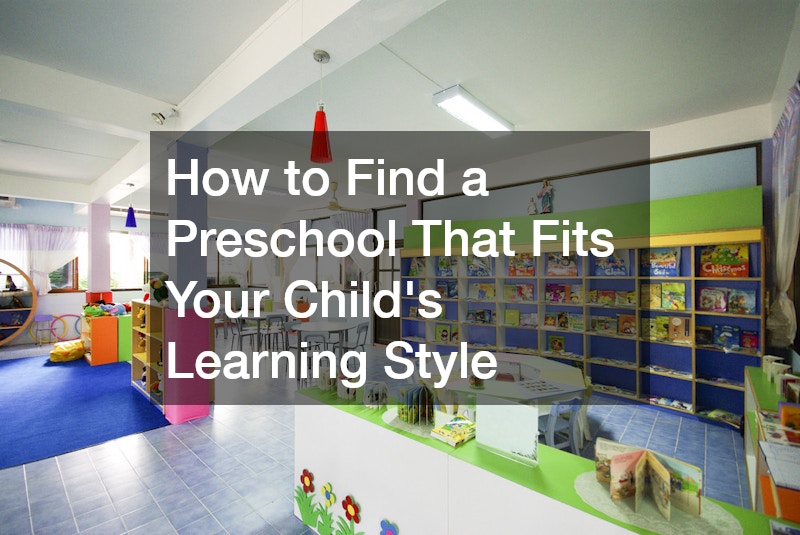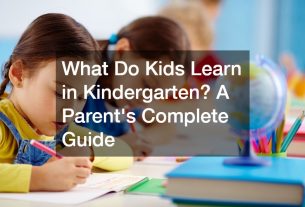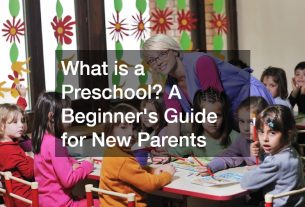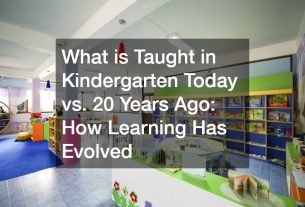
Choosing the right preschool is one of the most important decisions you’ll make in your child’s early years. While curriculum, cost, and location matter, a truly successful preschool experience hinges on one critical factor: how well the school supports your child’s individual learning style. Every child learns differently—some thrive in structured environments, others flourish through play and exploration. Understanding your child’s learning preferences and matching them with a preschool’s teaching philosophy can set the tone for their lifelong love of learning.
This guide will help you evaluate preschools not just by traditional standards, but through the lens of your child’s unique developmental needs and personality. Let’s dive into how to assess learning styles, identify matching preschool approaches, and make an empowered, confident decision.
What Are the Different Learning Styles in Early Childhood?
Before you begin searching for a preschool, it’s crucial to understand the concept of learning styles. While no two children are exactly alike, most young learners show a preference for certain types of engagement. These tendencies fall into broad categories:
- Visual learners: They understand better through images, colors, and spatial understanding.
- Auditory learners: They absorb information through sound, music, and verbal instruction.
- Kinesthetic learners: They learn best through movement, hands-on activities, and physical touch.
- Logical learners: They love patterns, numbers, and problem-solving games.
- Social learners: They thrive in group settings and love to collaborate.
- Solitary learners: They prefer quiet time and introspective activities.
Although preschoolers may not fit into just one style, noticing their tendencies can guide you toward an environment that nurtures their strengths while supporting areas that need growth.
How to Observe and Identify Your Child’s Learning Preferences
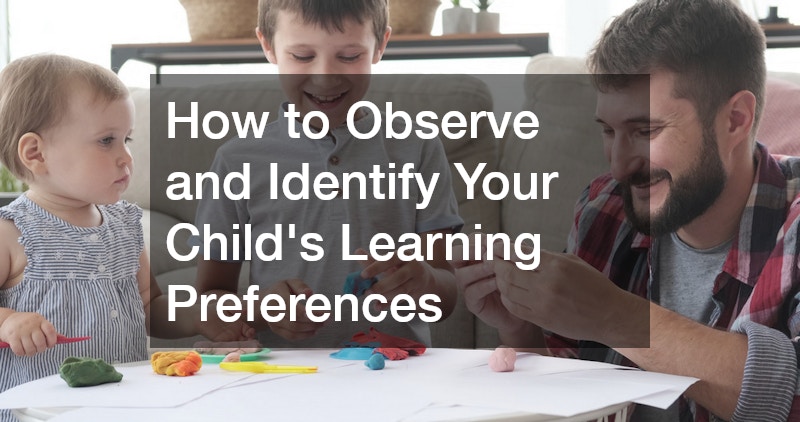
Understanding how your child naturally engages with the world is key to finding a preschool that suits them. Here’s how you can observe their learning style:
Watch Their Play:
- Do they spend hours drawing or arranging blocks? (Visual/Logical)
- Do they talk to themselves or sing a lot? (Auditory)
- Are they always moving, climbing, or exploring objects physically? (Kinesthetic)
Note Their Reaction to Instructions:
- Do they follow spoken directions well? (Auditory)
- Do they need to see something demonstrated first? (Visual)
- Do they try things out themselves, even without guidance? (Kinesthetic/Independent)
Pay Attention to Interests:
- Puzzle solving = Logical learner
- Group games = Social learner
- Solo storytelling = Solitary or auditory learner
Once you get a clearer sense of how your child naturally processes and enjoys learning, you’ll be better equipped to evaluate preschool philosophies.
What Are the Major Types of Preschool Philosophies?
Preschools can vary widely in terms of educational approach. Here are the most common types of philosophies and how they align with different learning styles:
Montessori
- Best For: Independent, kinesthetic, and logical learners
- Focus: Hands-on learning, individual pace, real-world skills
- Environment: Calm, organized classrooms with student-led exploration
- Key Feature: Children choose their own activities within a structured environment
Reggio Emilia
- Best For: Visual, social, and artistic learners
- Focus: Project-based learning, creativity, and community collaboration
- Environment: Aesthetic spaces designed to inspire
- Key Feature: Teachers act as co-learners, not instructors
Waldorf
- Best For: Imaginative, auditory, and creative learners
- Focus: Storytelling, music, art, and play
- Environment: Rhythmic daily routines with limited technology
- Key Feature: Strong emphasis on emotional development and imagination
Academic/Traditional
- Best For: Children who thrive on structure and routine
- Focus: Early math, reading, and writing skills
- Environment: Teacher-led with measurable milestones
- Key Feature: Prepares children for standardized school systems
How to Find a Preschool That Fits Your Child’s Learning Style
Now that you understand learning styles and preschool types, it’s time to find a match. This process involves more than just a Google search—it requires asking the right questions, touring schools, and trusting your instincts.
Start With Research:
- Use online directories (e.g., NAEYC, Yelp, local parenting forums)
- Filter by teaching philosophy, location, and age group
- Read parent reviews and testimonials
Questions to Ask During a Tour:
- What is your teaching philosophy, and how is it applied in the classroom?
- How do you handle different learning styles or temperaments?
- Can you walk me through a typical day for a child?
- What kind of activities are offered, and how much is child-led vs. teacher-led?
- How do you approach discipline and emotional regulation?
Things to Observe During the Visit:
- Are children engaged and happy?
- Do teachers speak gently and respectfully?
- Are learning materials varied—books, blocks, musical instruments, art supplies?
- Is the space organized in a way that invites exploration?
Choosing a preschool aligned with your child’s learning style increases confidence, reduces stress, and leads to a more enjoyable experience for everyone involved.
What to Do if Your Child Has a Mixed or Unclear Learning Style
It’s common for parents to feel uncertain, especially when children are still developing rapidly. Most kids don’t fit neatly into one category. Here’s how to navigate this:
Look for Balanced Programs:
- Seek preschools offering a blend of teaching methods—some structure, some play
- Make sure they emphasize emotional intelligence, not just academics
Prioritize Teacher Flexibility:
- Teachers who adapt to each child’s pace and needs are more important than the curriculum itself
Focus on Growth Mindset:
- Preschools should encourage curiosity, not rigid outcomes
- Celebrate effort over perfection
Remember, the best preschool doesn’t force a child to adapt—it meets them where they are.
How to Involve Your Child in the Preschool Decision
While you’ll make the final call, involving your child in small ways helps ease the transition and offers clues about compatibility.
Visit Together:
Bring your child on the tour and observe:
- Do they look excited or anxious?
- Are they curious or withdrawn?
Try a Trial Class:
If possible, let them attend a session or playdate at the school.
Ask Simple Questions:
- Did you like the toys and the kids?
- Was the teacher nice?
- Do you want to go back?
Their comfort matters. A positive emotional response can be a sign that the preschool is the right fit.
Why Matching Learning Styles Matters for Long-Term Success
When a preschool nurtures your child’s natural tendencies:
- They feel seen and valued
- They develop stronger self-confidence
- Learning becomes fun instead of stressful
- Social skills improve organically
Early positive experiences in education shape how your child sees school, learning, and even themselves. That’s why aligning preschool with their learning style isn’t a luxury—it’s an investment in their foundation.
Common Mistakes to Avoid When Choosing a Preschool
Even with the best intentions, parents sometimes overlook key factors. Here’s what to avoid:
🚫 Mistake #1: Prioritizing Prestige Over Fit
A well-known school may not suit your child’s needs. Fit > fame.
🚫 Mistake #2: Overvaluing Academics Too Early
Play is essential for preschoolers’ cognitive and social development. Don’t rush formal academics.
🚫 Mistake #3: Ignoring Your Gut Feeling
If something feels “off” during a tour—even if the school looks perfect on paper—trust your instincts.
Checklist: Questions to Guide Your Preschool Search
Use this list to stay focused during your tours and interviews:
- ✅ Does the school align with your child’s preferred learning style?
- ✅ Is the environment emotionally supportive?
- ✅ Are teachers trained in early childhood education?
- ✅ Is there room for individual exploration and growth?
- ✅ Is communication with parents open and frequent?
- ✅ Does your child feel comfortable there?
What Role Do Teachers Play in Supporting Different Learning Styles?
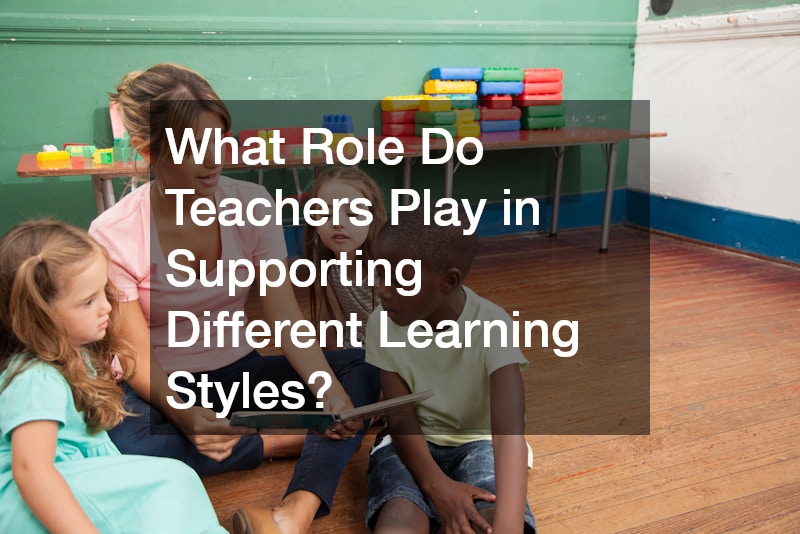
Teachers are the backbone of any preschool program, and their ability to recognize and respond to different learning styles is crucial. A good teacher adapts their instruction based on the child’s needs, rather than forcing a one-size-fits-all method. Here’s what to look for:
- Differentiated instruction: Are lessons delivered using visuals, storytelling, and hands-on activities?
- Observation skills: Do teachers take note of how each child responds and adjust their approach accordingly?
- Encouragement of self-expression: Are children allowed to express what they’ve learned in different formats (e.g., drawing, singing, building)?
- Patience and responsiveness: Good teachers don’t rush—they guide, pause, and pivot based on the child’s reaction.
Ask how teachers are trained in supporting various learning styles and what feedback they provide to parents.
How Can Parents Support Learning Styles at Home After Preschool?
Learning doesn’t stop when the preschool day ends. Reinforcing your child’s learning style at home builds consistency and confidence. Aligning home activities with your child’s preferences can deepen their love for learning.
- For visual learners: Use charts, color-coded chores, storybooks with pictures, and art supplies.
- For auditory learners: Read aloud, play music, or tell bedtime stories using voice inflection and rhythm.
- For kinesthetic learners: Encourage building with blocks, outdoor play, dancing, or helping with hands-on tasks.
- For logical learners: Offer puzzles, number games, or simple sorting activities.
Supporting their learning style at home reinforces what they experience in preschool and helps them thrive across all environments.
How to Evaluate a Preschool’s Curriculum for Learning Style Compatibility
Curriculum is more than just a list of topics—it’s a framework for how your child will explore the world. When visiting preschools, don’t just ask what they teach—ask how. The curriculum should reflect a variety of activities that cater to multiple learning styles:
- Visual-friendly: Are there picture books, visual schedules, and colorful displays?
- Auditory-friendly: Is music integrated into the day? Do teachers use verbal storytelling?
- Kinesthetic-friendly: Is movement encouraged through play, dance, and hands-on exploration?
- Flexible pacing: Does the curriculum allow children to progress at their own speed?
A well-rounded curriculum that includes free play, group work, creative arts, and practical tasks is often the most inclusive for all learners.
Conclusion: Choosing the Right Preschool is a Personal Journey
There’s no one-size-fits-all answer to preschool. The goal is not to find the “best” school but the best fit for your child’s personality, interests, and developmental needs. By observing your child, asking the right questions, and touring schools with an open mind, you’re setting the stage for a joyful, engaging early education experience.
Give yourself permission to explore, ask, and trust that you know what’s best for your child. You’ve got this.
